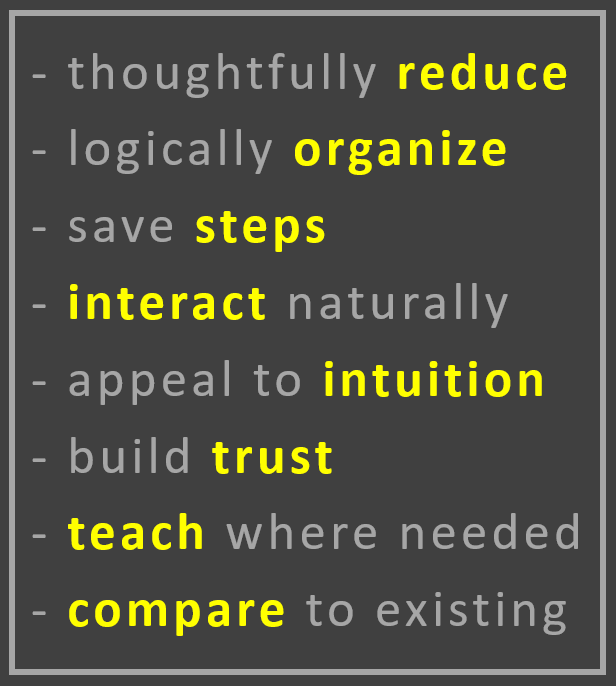What makes one product better than another?
Often we think it needs to be smarter, taller, stronger, lighter, safer, etc. than the competition. I believe that the simplicity of a product needs to be considered with the same gravity as these other high level product goals.
Making a product simpler doesn’t mean dumbing it down, or making it more basic. Its about improving comprehension, and building a better mental model of the product.
System complexity isn’t necessarily the enemy of simplicity. Complication is.
On the “simple spectrum”, complicated products are the polar opposite of overly simplistic products. Both extremes can lead to user confusion.
Simplicity is all about having the proper balance. You need enough functionality to get the job done, but not so much functionality that you can’t figure out how to use the product.
A simple product has clear usability and quickly builds a good mental model in the users brain.

We often forget about product simplicity until later in the design cycle, when the complication has already grown from natural project disruption.

8 TOOLS
During the design cycle, we need to be working to constantly and consistently apply the following tools according to our customers use context. These are presented in order of importance, and will require some amount of interpretation on a per-product basis.
1. THOUGHTFULLY REDUCE
Control the product scope.
Identify and solve the key customer goals.
Products that try to be all things to all people generally become complicated.
Hide product complexity from the user.
2. LOGICALLY ORGANIZE
Organization builds a clearer mental model.
Separate elements into logical groups.
Consider presenting functions by priority.
Color coordinate.
3. SAVE STEPS
Streamline use.
Save time and effort for your customers.
Automate what should be automated.
4. INTERACT NATURALLY
Conform to your user. Don’t make them conform to your product.
Ergonomics, safe access, and user comfort make a product appeal more to the human form.
5. APPEAL TO INTUITION
Build upon existing knowledge that your user may have.
Create continuity across your product line.
Make the product feel instinctive.
Controls mimic functions.
6. BUILD TRUST
Reliable products feel simple.
Consider what happens when something does break.
Provide useful feedback.
Use modal controls sparingly.
7. TEACH WHERE NEEDED
Label things that are complicated.
Consider where information may be the most valuable to the operator.
This is why we have manuals, to try to make products usable.
8. COMPARE TO EXISTING
If all else fails, at least make your product feel simpler than previous products.
Work to minimize confusion.
Study what makes something feel complicated.
Work to build better mental models for your customers.
I presented the above tools at the 2016 Altec Engineering Symposium. These tools are built upon the work of John Maeda and many other books on the subject of simplicity. My goal was to make the tools less nebulous and more actionable for a product designer.




